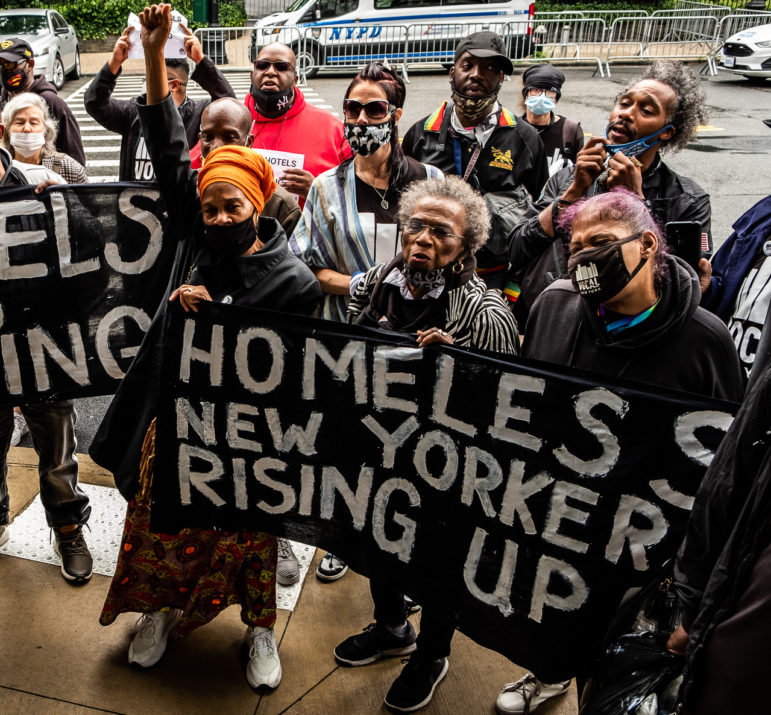
Adi Talwar
A rally in June 2021, calling for the city to create more permanent housing for homeless New Yorkers.Since the start of 2022, City Limits publishes regular tallies attempting to more accurately track the number of people staying in New York City’s homeless shelters, a population that spans five municipal systems run by four different agencies. You can read more about this project, and the difficulties in obtaining a complete count, here.
We will aim to update numbers in the first three charts daily, pursuant to the city releasing the data in a timely manner (the Department of Homeless Services is legally obligated to publish a shelter census each day, though in reality this does not always happen). These charts will likely evolve as more up-to-date data becomes accessible through the legally-mandated tallies, specific press inquiries and Freedom of Information Law requests.
Have questions or comments about this project? Email editor@citylimits.org
Most days, DHS publishes a detailed tally of people staying in the shelters it administers on its website. This number includes New Yorkers staying in shelters for single adults, families with children and adult families. A separate box on the report also lists the number of people staying in “SafeHavens”—special shelters with fewer restrictions for New Yorkers who were previously bedding down in public spaces—along with New Yorkers in veterans shelters, overnight drop-in centers, transitional housing for people leaving jails and prisons and “faith beds.”
This information is not available every day, however. City Limits will update the data as often as it becomes available, including through responses to records requests.
Editor's note: These numbers do not include asylum seekers staying in emergency facilities run by the Office of Emergency Management (OEM) and the Health + Hospitals Corporation.
The number of families with children staying in a DHS shelter is available through the city's Open Data portal, though there is generally a reporting delay.
In addition to the New Yorkers who stay each night in a DHS shelter, there are thousands of survivors of domestic violence staying in residences administered by the Human Resources Administration (HRA). There are also hundreds of people with HIV/AIDS in emergency shelters and transitional housing units overseen by HRA’s HIV/AIDS Services Administration (HASA).
The city’s Department of Youth and Community Development (DYCD) contracts with nonprofits to provide more than 750 shelter beds for young people, known as runaway homeless youth, or RHY. And then there are emergency shelters overseen by the Department of Housing Preservation and Development (HPD) for people who lost housing because of a disaster, like a flood or fire, or because their home was condemned by the city.
Under a 2011 city rule known as Local Law 37, HRA, DYCD and HPD are required to report the number of unique—or “unduplicated”—individuals who stayed in their shelters each month. City Limits will update this chart with the most recent data available.
For shelter beds run by these agencies, City Limits is currently forced to rely on the most recent month for which complete data is available. We will update these charts as the city fulfills our requests for more recent, complete numbers.
—Reporting by David Brand.
This project, and City Limits' expanded coverage of the NYC homelessness crisis, is supported by Trinity Church Wall Street. City Limits is solely responsible for the content and editorial direction.




